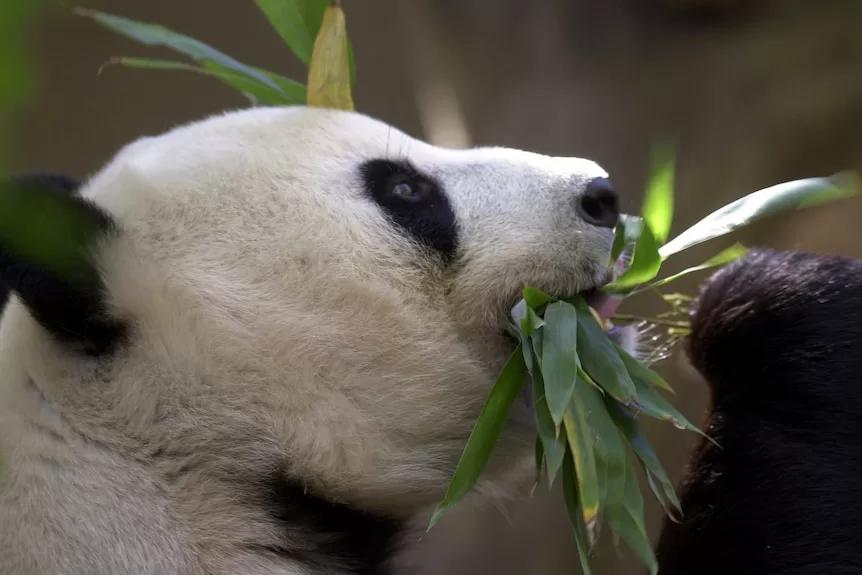China plans to send two giant pandas to the San Diego Zoo, renewing its longstanding gesture of friendship toward the United States after nearly all pandas on loan to US zoos were sent back as relations soured between the two nations.
If all permits are approved, two bears, a male, and a female, are expected to arrive as early as the end of the northern summer, about five years after the zoo sent its last pandas back to China, San Diego Zoo officials said.
Who are the pandas heading to San Diego?
China is considering a pair that includes a female descendent of Bai Yun and Gao Gao, two of the zoo’s former residents, said Megan Owen of the San Diego Zoo Wildlife Alliance and vice-president of Wildlife Conservation Science.
Bai Yun, born in captivity in China, lived at the zoo for more than 20 years and gave birth to six cubs there.
She and her son were the zoo’s last pandas and were returned to China in 2019.
Gao Gao was born in the wild in China and lived at the San Diego Zoo from 2003 to 2018 before being sent back.
“We look forward to further expanding the research outcomes on the conservation of endangered species such as giant pandas, and promoting mutual understanding and friendship among peoples through the new round of international cooperation,” Chinese Foreign Ministry spokesperson Mao Ning said in Beijing.
What is panda diplomacy?
Zoos typically pay a fee of $US1 million a year for two pandas.
The money is earmarked for China’s conservation efforts, according to a 2022 report by America’s Congressional Research Service.
The black-and-white bears have long been the symbol of the friendship between the US and China since Beijing gifted a pair of pandas to the National Zoo in Washington, DC, in 1972, ahead of the normalisation of bilateral relations.
China later loaned pandas to zoos to help breed cubs and boost the population.
Fears over the future of so-called panda diplomacy escalated last year when zoos in Memphis, Tennessee, and Washington, DC, returned their pandas to China, leaving only four in the United States, all at the zoo in Atlanta.
That loan agreement expires later this year.
Many loan agreements were for 10 years and often were extended well beyond.
But negotiations last year to extend the agreements with US zoos or send more pandas did not produce results.
China watchers speculated that Beijing was gradually pulling its pandas from Western nations due to deteriorating diplomatic relations with the US and other countries.
Then on November 15 last year, a week after the National Zoo’s pandas departed for China, Mr Xi spoke at a dinner in downtown San Francisco with American business executives and signalled that more pandas might be sent.
He said he learned the San Diego Zoo and people in California “very much look forward to welcoming pandas back”.
The future of pandas
Decades of conservation efforts in the wild and study in captivity saved the giant panda species from extinction, increasing its population from fewer than 1,000 at one time to more than 1,800 in the wild and captivity.
The US, Spain and Austria were the first countries to work with China on panda conservation, and 28 pandas have been born in those countries, the Xinhua report said.
The new collaboration will include research on disease prevention and habitat protection, and contribute to China’s national panda park construction, it said.
Staff at San Diego Zoo continued to work with their Chinese counterparts even after it no longer had any pandas.
Ms Owen said China was particularly interested in exchanging information on the zoo’s successful breeding of pandas in captivity.
Giant pandas are difficult to breed in part because the female’s reproductive window is extremely narrow, lasting only 48 to 72 hours each year.
Bai Yun’s first cub, Hua Mei, was also the first panda born through artificial insemination to survive into adulthood outside of China, and would go on to produce 12 cubs on her own after she was sent to China.
“We have a lot of institutional knowledge and capacity from our last cooperative agreement, which we will be able to parlay into this next chapter, as well as training the next generation of panda conservationists,” Ms Owen said.
She said the return of the bears is not only good for San Diego but the giant panda’s recovery as a species.
“We do talk about panda diplomacy all the time,” Ms Owen said.
“Diplomacy is a critical part of conservation in any number of contexts … If we can’t learn to work together, you know, in sometimes difficult situations or situations that are completely out of the control of conservationists, then we’re not going to succeed.”
AP
